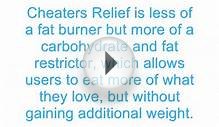
If you have a Taco Bell Cheesy Gordita Crunch habit, the first step is easy: Limit your intake of anything with a name that includes the words "cheesy, " "gordita, " and/or "crunch."
But you still need to eat something, and whatever it is, it'll have calories you must account for. The accounting is simple: There are two sides to the ledger. One side is your calorie intake, and the other is your metabolism—that is, the calories you burn—which works in four ways.
Digest. About 10 percent of your metabolism comes from how you process food. But you can do better if you eat more protein. 25 percent of protein calories are burned after you swallow them, compared with 2 to 3 percent of fat calories and 6 to 8 percent of calories from carbs.
Move. Everything from working out to walking to the mailbox burns more calories than not moving—and accounts for 20 to 30 percent of your metabolism. The more you move, the better, including those times when you...
Hit the can. When you dial up a #1 or #2 (or sneak out a fart), energy leaves your body. Alas, you can't toot your way to single-digit body fat.
Stay alive. The rest of the calories you eat go toward your body's other basic operating functions. (That's at least 60 percent of your metabolism.) By changing the "calories in" part of the formula, you also change the "calories out."
With less energy in the tank, you may burn fewer calories during your workouts. That's the danger of cutting calories without a plan to maintain your new lower weight. Your metabolism slows, leaving you hungry and primed to regain fat you lost, especially when hunger hits near a Taco Bell. The key is to reverse that process.
Principle No. 2
You Need to Eat Better Food
Pity the man forced to survive on gluten-free pizza and fat-free ice cream. The Lean Muscle Diet makes eating easy and delicious because you're encouraged to eat (gasp!) real food. Here's the breakdown of your eating plan.
Eat 80 percent of your diet in whole and minimally processed foods that you like. "Whole" foods are ones that look like what they started out as: meat, fish, eggs, milk, nuts, seeds, fruits, vegetables, potatoes, and beans. One exception: Protein powders are highly processed, but they're still a great way to consume the protein you need to make the plan work.
Eat 10 percent in whole and minimally processed foods that you don't necessarily like but don't hate (say, Swiss chard and lamb). This is intended to expand the range of nutrients you're eating. Maybe you'll even learn to like a food, which means you're less likely to suffer from diet burnout.
Eat 10 percent in whatever the hell you want. Consider this your reward for faithfully embracing the two previous categories. Use this bonus however you'd like: Have a small indulgence every day, or save up for a bigger weekend junkfest. Even if it includes Cheesy Gordita Crunches.
Here's a shortcut: If the food doesn't have an ingredient list, it's a safe bet. Steak, apples, quinoa, eggplant, salmon—they're all single-ingredient foods. With packaged foods, each additional ingredient signals an extra step in processing, which may have stripped away some of the good stuff. And often, to make up for lost flavor, food manufacturers pump processed foods with sugar and fat. These foods also tend to be higher in calories.
"Quality" also means taste. On this plan, you won't find any rules about foods you must eat. Nor will you find a list of foods you should never eat. Just about anything you already enjoy can fit into the plan, although perhaps not in the quantities you're used to eating.
Principle No. 3
Macronutrients Matter (Especially Protein)
Nutritionists refer to protein, carbs, and fat as "macros." Protein, of course, is the stuff of muscle growth, particularly branched-chain amino acids (BCAAs), including leucine. The circles above show the stats for three good protein sources. On our plan, you'll eat 1 gram of protein for every pound of your target body weight, or 25 percent to 35 percent of your daily diet.
But protein also increases satiation (feeling full at the end of a meal) and satiety (feeling less hungry between meals). So protein pulls triple duty: It speeds your metabolism, slows your appetite, and maintains muscle.
What about the other macros? You'll eat 0.4 to 0.7 gram of fat per pound of your target body weight per day. If you have a good chunk of body fat to lose, use the higher end of that scale. It's not that fat calories have any magical properties; a higher percentage of fat simply means fewer carbs. That tends to work better for heavier guys, who often are less sensitive to insulin, a hormone triggered by high-carbohydrate meals. Less sensitivity means more insulin; more insulin means your body will use less fat for energy. For everyone else, it's personal preference. Whatever calories are left after your calculations will come from carbs. Who knew math could be so tasty?
Principle No. 4
Micronutrients Matter Too
One risk of popular low-calorie diets: nutrient deficiency. That's because the less food you eat, the harder it is to cover the basics. A multivitamin may help, but it probably won't contain enough immunity-fortifying magnesium or bone-building vitamin D. Research shows that eating a wide variety of foods provides the greatest benefit for overall health. To collect those key nutrients, dust off the old-fashioned idea of food groups.
Here's your menu.
Meat and other protein-rich foods, including eggs and protein powder.
Fat-rich foods, such as nuts and seeds, oil used for cooking or salad dressing, butter (and nut butters), olives, and avocados.
Fibrous vegetables, including just about anything your mother said you had to eat if you wanted dessert.
Starchy foods, such as grains (bread, cereal, pasta), legumes (beans and peas), and tubers (potatoes and other root vegetables).
Milk and other dairy products, which includes all varieties of cheese, yogurt, and, yes, even chocolate milk.
Fruits, fresh or dried. And no, Starbursts don't count.
Aim to include at least one food from each category every day, with some variety in fruits and vegetables, and you'll hit the full range of micronutrients you need to look good and feel great. For more great grub, check out the 14 New Muscle Foods.
We know what you're thinking: What about my beer? Moderate drinking won't likely affect your weight in either direction as long as the calories from alcohol replace something else. If not, you'll probably gain fat. So swap out your carbs for alcohol. If you know you're going to have two beers out at the bar later, just eat 300 fewer carbohydrate calories (or 75 grams) that day.
So now that you understand the nutrition principles, let's move on to the first step in the plan: calculating how much food you'll eat each day.
Principle No. 5
For Bigger Muscles, Lift Bigger Weights
Mechanical tension—created by loads that are taxing to your muscles, connective tissue, and bones—is the most important stimulus for building muscle. But you can't grow your guns if you lift the same amount of weight every workout. By incrementally increasing your loads over the course of the program, you challenge your muscles to become stronger in order to handle subsequent heavier weights. It should be hard to complete the final reps on your final set with good form.
Principle No. 6
Devote 80 Percent of Time to Big Muscles
Most guys have this flipped, investing their gym hours on their biceps, triceps, and deltoids. Those muscles are important, but they're smaller for a reason: to help larger muscles during basic actions such as pushing, pulling, lifting, carrying, and throwing. Smaller muscles also won't grow out of proportion to the larger muscles they're designed to assist. On the Lean Muscle Diet workout plan, you do your heavy lifts first. And that means to see big gains, you'll need to work the big muscles with squats, deadlifts, presses, rows, chinups, and pullups.
INTERESTING VIDEO












